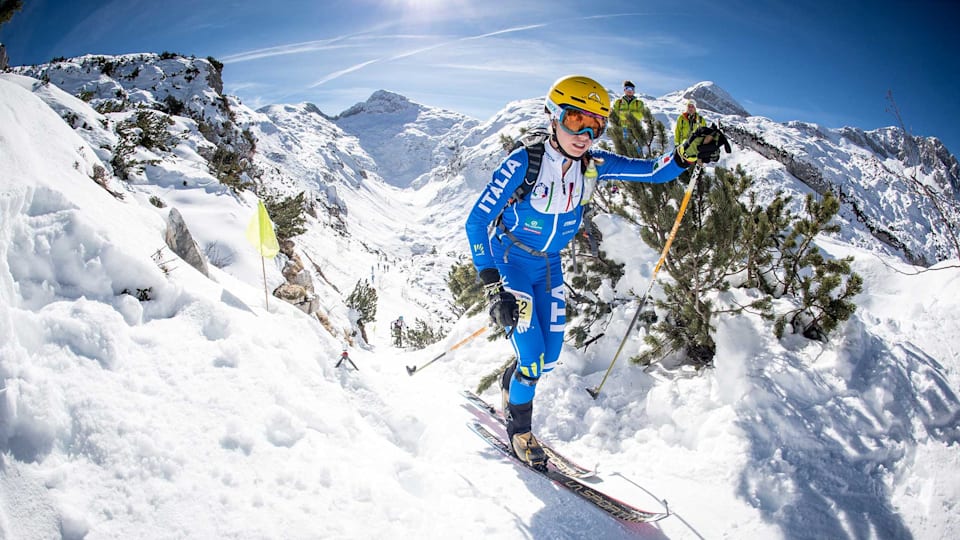Mountain Medicine CPD Part 5
Posted by Jeremy Windsor on Dec 1, 2023
With the help of the British Mountain Medicine Society and UCLan, we have recently launched a series of twelve posts designed to help those searching for mountain medicine CPD.
Each month we're planning to publish a post that will be packed full of mountain medicine CPD ideas - whether they're face-to-face courses, webinars or all manner of text, audio and video materials. We'll also include ideas on how to brush up on practical skills. So if you're involved in delivering mountain medicine why not subscribe to the blog and receive these posts as soon as they're published?
Each topic is mapped to the Diploma in Mountain Medicine (DiMM) syllabus. For more information about recording your CPD take a look at this.
The first in the series can be found here.
With winter not far away I've focused this month on ... skiing! Here's some CPD to get you ready for the slopes...
There's no better place to start than with a first hand account. In 2020, Adam Campbell was backcountry skiing with his wife Laura Kosakovski and a local ski guide. As they set off on their last descent, all three became engulfed in an avalanche. Laura was killed. In Episode 76 of The Sharp End podcast Adam describes what happened that day and the devastating impact it has had upon his life.
The Wilderness Medical Society have produced an excellent guideline describing the prevention and management of avalanche accidents. If you're looking for the evidence behind avalanche airbags, artificial air pocket devices and search techniques then this is the place to take a look.
Whilst we're on the subject of WMS guidelines, skiers might also been interested to read those focusing on hypothermia, frostbite and non-freezing cold injury. Well referenced, clearly written and highly practical, they're a very good place to start in the hunt for good CPD.
Dave Searle, a UK mountain guide based in Chamonix, has produced a series of online tutorials for mountain visitors. Why not try, "How To Plan Your Backcountry Ski Adventure"? Find it here
The International Commission for Alpine Rescue (ICAR) has recently produced guidance for the on-site management of avalanche victims. This is neatly summarised in an algorithm that can be found here. For more on the impact of snow burial it's worth taking a look at this scoping review. Be warned - it's a comprehensive document and will need quite of bit of time to digest. Nevertheless, as a source of references and information it's hard to beat.
For something much shorter take a look at Manuel Genswein's Mountain Safety Info website. If you're involved in education, his best practise leaflets can be downloaded free of charge.
Avalanche Canada have produced a free online training tool. It's well presented and highly accessible - a perfect introduction for those new to backcountry skiing. Avy Savvy can be found here.
For practical face-to-face avalanche training there's lots of providers out there. One that comes highly recommended is Avalanche Geeks.

Never doubt the value of an emergency shelter on a ski mountaineering trip! Or for that matter, using a prussic to abseil or a slow ascent to altitude!
The European Resuscitation Council “Guidelines For Resuscitation 2021 - Cardiac Arrest In Special Circumstances” gives detailed guidance on the management of cardiac arrest in a number of different circumstances. Figure 7's algorithm highlights ALS management following avalanche burial. A good summary can be found here.
For those heading to France, Data Avalanche! have reports of more than 4000 avalanches on their database. Updates are posted on a regular basis and provide a very good idea of current conditions. Closer to home, the Scottish Avalanche Information Service provides daily reports from five areas of Scotland throughout the winter. Along with the forecast, the images and comments posted by the avalanche assessors are an incredible resource for skiers, walkers and climbers alike.
Talking about Scotland, I'd really urge CPDer's to take a look at Dave "Heavy" Whalley's website. As someone involved in Scottish mountain rescue for many years he provides a fascinating historical perspective that's well worth a read.
Along with asphyxia and hypothermia, trauma is a common cause of death amongst avalanche victims. In Episode 38 of The Sharp End podcast Mike Zawaski talks about the fractured femur that he suffered following an avalanche in Jones Creek, Colorado. Well worth listening to.
More CPD on trauma to follow in future posts...
Contents of this post are mapped to the following topics on the DiMM syllabus:
Mountain Medicine CPD (4) Hypothermia
Mountain Medicine CPD (5) Frostbite
Mountain Medicine CPD (14) Weather
Mountain Medicine CPD (24) Avalanche Risk Assessment...
Mountain Medicine CPD (25) Organised Rescue
Mountain Medicine CPD (26) Death in the Mountains
For more information about recording your CPD take a look at this.
That's it for now. I'd like to thank Declan Phelan, GP and President of the Eagle Ski Club, for his many brilliant suggestions.
The Eagle Ski Club is a great way to link up with others likeminded ski touring and mountaineering enthusiasts. Details about the club can be found here.
Thanks for reading this post. If this is your thing why don't you take a look at other posts on the blog? Better still, why not join the British Mountain Medicine Society? More information can be found here.
For more information about the University of Central Lancashire's Diploma in Mountain Medicine (DiMM) take a look at this.
Comments
Leave a comment.
Leave a comment.




 )
)